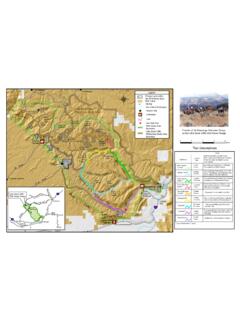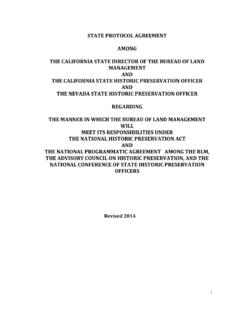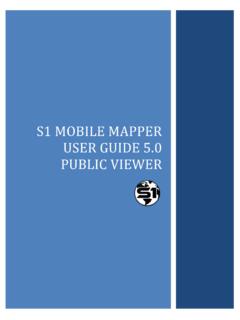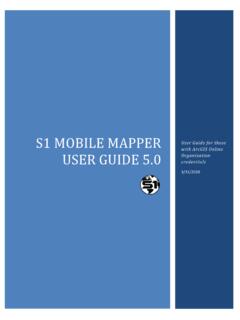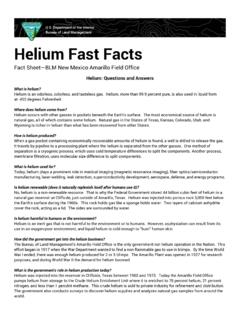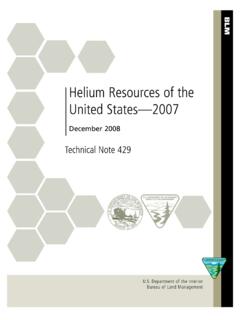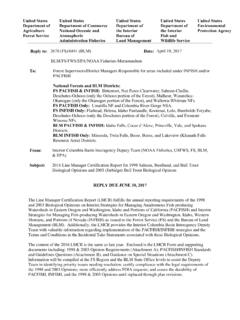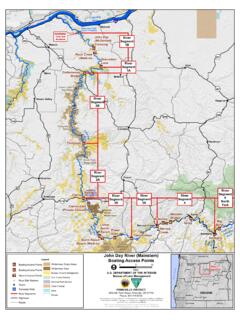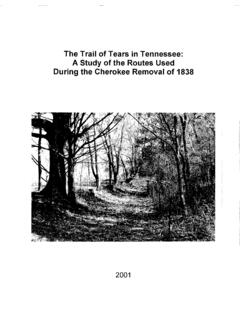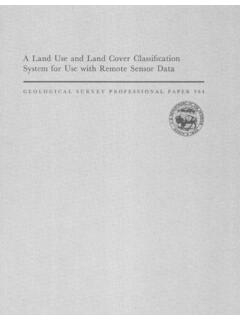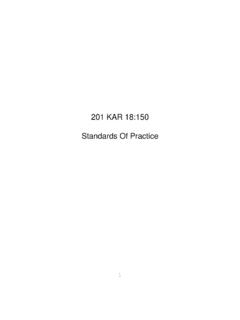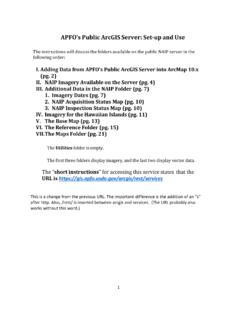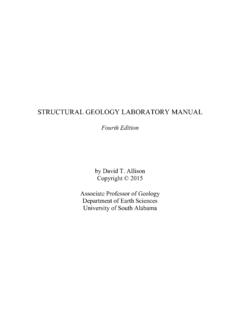Transcription of Mining Claims and Sites on Federal Lands Brochure 2021
1 Mining Claims and Sites on Federal LandsCredit for cover photo: BLM historical databaseCredit for inside photos: Ron LandbergProduction services were provided by the BLM National Operations Center s Information and Publishing Services +3800+REV21iForewordThe Bureau of Land Management (BLM) manages about 245 million acres of public land, primarily located in 12 western states, including Alaska. The BLM also administers about 700 million acres of subsurface mineral estate throughout the nation. The BLM s multiple-use mission is to sustain the health, diversity, and productivity of the public Lands for the use and enjoyment of present and future generations.
2 The BLM accomplishes this mission by managing activities, such as outdoor recreation, livestock grazing, mineral development, and energy production, and by conserving natural, cultural, and other resources on public Federal Land Policy and Management Act (FLPMA) of 1976 provides that the public Lands remain under the stewardship of the Federal Government, unless disposal is in the national interest and consistent with publicly approved land use plans, and that their resources be managed under a multiple-use concept that will best meet the present and future needs of the American people.
3 Since Mining is one of the multiple uses of BLM public Lands , this pamphlet provides information on activities that fall under the Mining Law of 1872, as ..1 Explanation of Discovery ..3 Locatable Minerals ..3 Discovery of a Valuable Mineral Deposit ..4 Explanation of Location ..7 Mining Claims and Lands Open to Mining ..11 Staking a Mining Claim or Site ..13 Recording a Mining Claim or Site ..15 Maintenance of a Mining Claim or Assessment Work ..19 Surface Land and Mineral of and Minerals, Topographic Maps, and Mining of Land Management State Forest Service Regional three basic types of minerals on Federal Lands include:1.
4 Locatable minerals (subject to the Mining Law of 1872, as amended)2. Leasable minerals (subject to the various Mineral Leasing Acts)3. Salable minerals (subject to mineral materials disposed of under the Materials Act of 1947, as amended) Federal laws, regulations, and legal decisions have defined these minerals. This pamphlet only focuses on locatable minerals. The Mining Law of 1872, as amended (30 22-54 and 611-615) allows citizens of the United States the opportunity to explore for, discover, develop, and purchase certain valuable mineral deposits on those Federal Lands that are open for Mining claim location and patent ( open to mineral entry ).
5 The law sets general standards and guidelines for claiming the possessory right to a valuable mineral deposit discovered during exploration, as well as establishing the right to develop and extract the mineral deposit. These locatable mineral deposits include most metallic mineral deposits and certain nonmetallic and industrial minerals. Mining Claims located or perfected after the enactment of the Surface Resources Act on July 23, 1955 (30 612) are subject to use for certain purposes by the United States or its permittees or licensees, provided that such use does not materially interfere with Mining or processing operations.
6 All Mining Claims must comply with all applicable laws and regulations, such as the BLM s surface management regulations at 43 CFR 3809. These regulations were issued pursuant to Section 302(b) of the Federal Land Policy and Management Act (FLPMA), 43 1732(b), which specifically amended the Mining Mining Law allows for the enactment of state laws governing location and recording of Mining Claims and Sites that are consistent with Federal law. The Federal regulations implementing the Mining Law are found at Title 43 of the Code of Federal Regulations (CFR) in Group 3700 and Part five elements of the Mining Law of 1872, as amended, are described in this pamphlet:1.
7 Discovery of a valuable mineral deposit2. Location of Mining Claims and sites3. Recordation of Mining Claims and sites4. Annual maintenance (annual assessment work or annual fees) for Mining Claims and sites5. Mineral patentsThis pamphlet also provides a brief introduction of the BLM Mining Law Administration Program s responsibilities on Federal Lands administered by the BLM. The program involves Mining claim recordation, annual maintenance (annual assessment work or annual fees), mineral patents, and surface management.
8 The last section provides additional sources for more information on the following topics: Geology and mineral resources of a particular area Surface management regulations Other Federal and state legal requirements3 Explanation of Discovery Locatable MineralsThe Mining Law of 1872, as amended, opened the public Lands of the United States to mineral acquisition by location and maintenance of Mining Claims . Mineral deposits subject to acquisition in this manner are generally referred to as locatable minerals. Locatable minerals include both metallic mineral deposits ( , precious, base, nonferrous, and light metals) and nonmetallic mineral deposits ( , industrial minerals, gemstones, and uncommon varieties of stone).
9 In 1873, the Department of the Interior (DOI) began defining locatable minerals as those minerals that are recognized as a mineral by the standard experts, are not subject to disposal under some other law, and make the land more valuable for Mining purposes than for agriculture. It is difficult to list all locatable minerals because of the complex legal requirements for discovery. For example, when minerals that are typically locatable are found on Lands acquired (purchased or received) under the Mineral Leasing Act for Acquired Lands of 1947, as amended, by the United States or found on American Indian reservations, they are subject to lease only (43 CFR 3500).
10 Therefore, it is easier for the BLM to list the minerals that are not July 23, 1955, common varieties of sand, gravel, stone, pumice, pumicite, and cinders were removed from the Mining Law and placed under the Materials Act of 1947, as amended. Use of salable minerals requires either a sales contract or a free-use permit. Disposal of salable minerals from BLM-administered Lands are regulated by 43 CFR 3600. Uncommon varieties of salable-type minerals may be locatable if the deposits meet certain tests created 4by various judicial and administrative decisions.
